I don’t know about you, but I used to think that all conifers were evergreen. Not true! The Bald Cypress is a conifer that loses its needle-like foliage every winter becoming, well, bald. But if you catch sight of one in the autumn, it’s a glorious, coppery-red.
Bald Cypress in Autumn
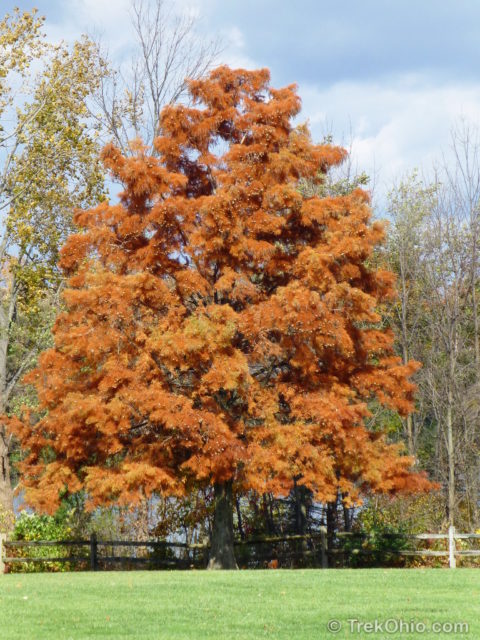
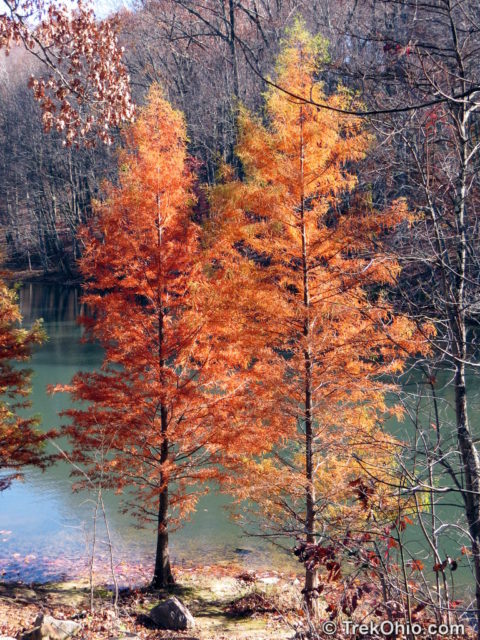
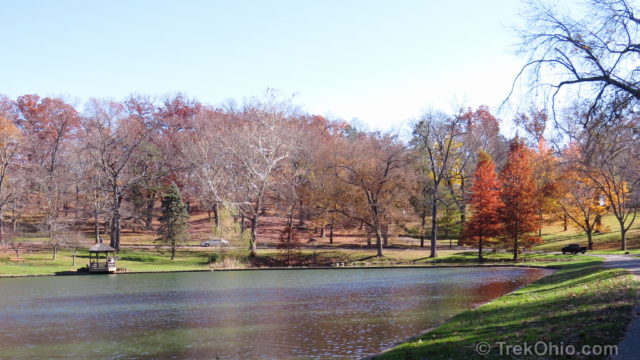
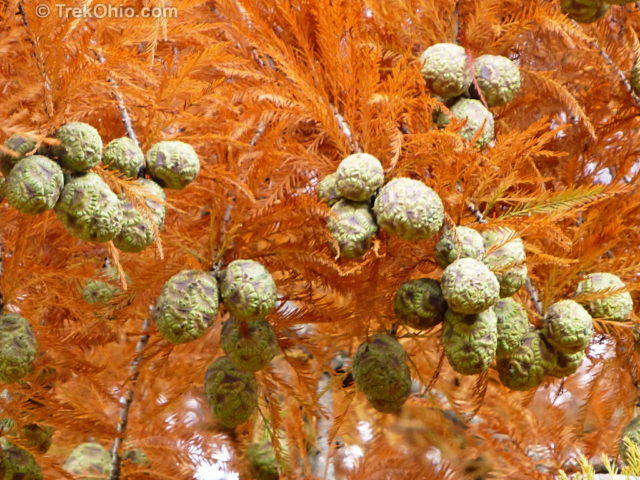
Bald Cypress in Other Seasons
The two trees in the foreground below are Bald Cypress photographed in December.
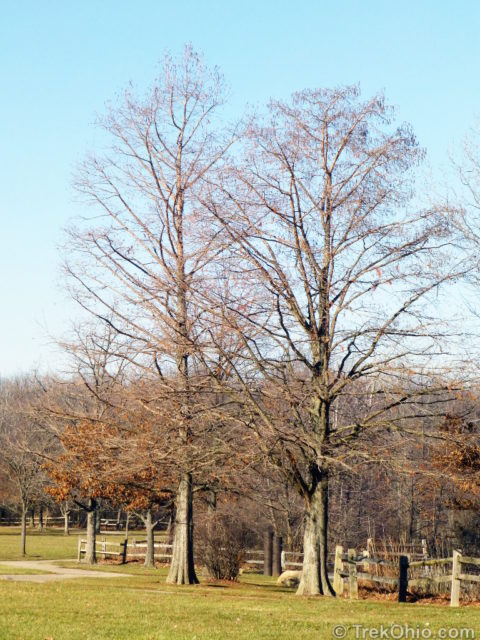
The two trees in front of the boardwalk below are also Bald Cypress. They are just beginning to come into leaf in late May.
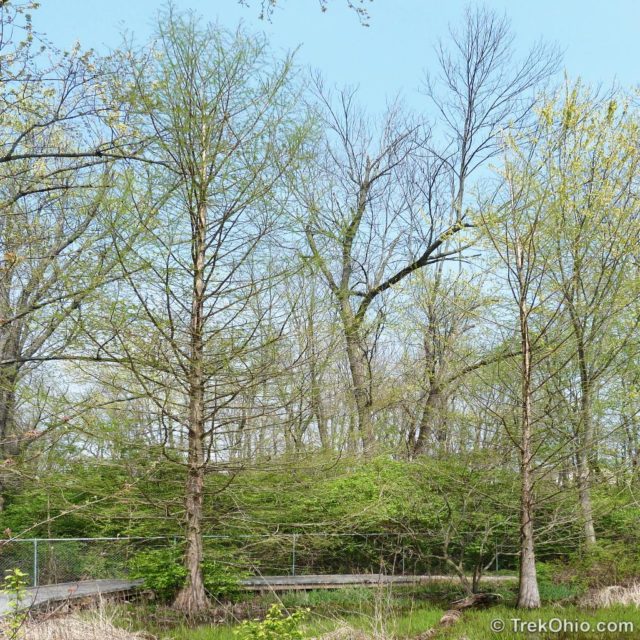
The trees below were photographed in June at the Cypress Swamp in Dawes Arboretum in Licking County. The younger trees have a pyramidal shape (in other words, they look like Christmas trees). In the background you can see that the mature trees have a more open shape. In Ohio the trees grow to be 60 feet with a canopy that spreads out to about 25 feet. In their native habitat they can grow to be 100 feet or even 120 feet tall.
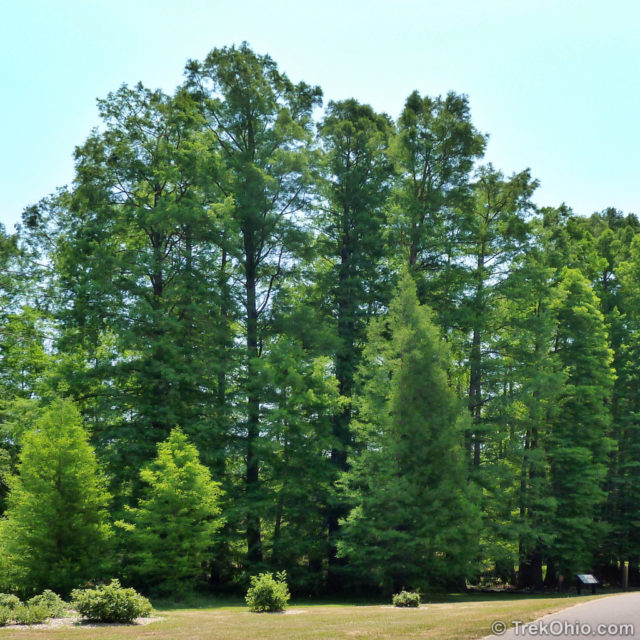
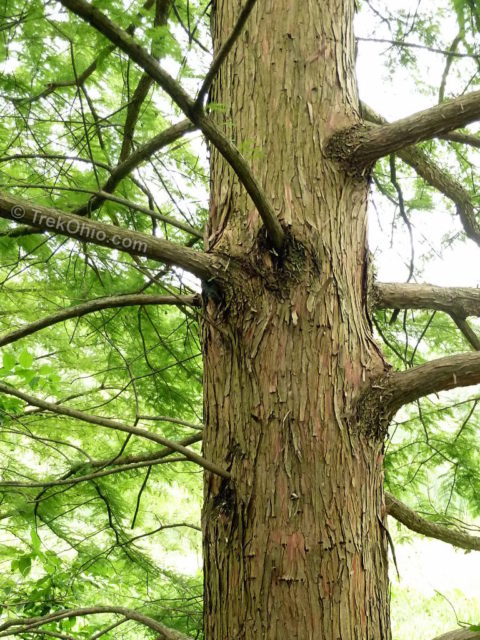
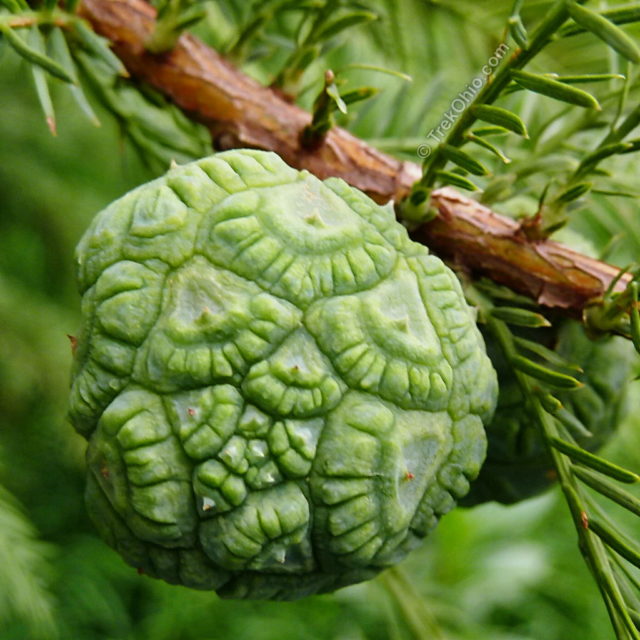
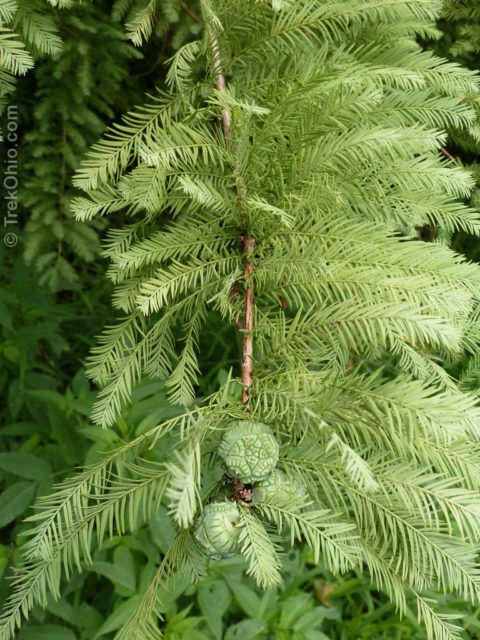
Bald Cypress Range
The Bald cypress is a native, North American tree found in the deep south extending northward to the southern-most tip of Illinois and also along the Atlantic coast from Florida to southern Delaware. In the wild it is normally found in wet environments because other trees can out-compete it in drier environments. Because it often grows in swampy areas, when it drops its cones the water helps to disperse its seeds. The seeds won’t germinate unless they are in saturated (not flooded soil) for at least one to three months. It prefers sandy loam that’s somewhat acidic.
However when planted as an ornamental tree in a manicured landscape, it turns out that it does fine in drier soil. It is susceptible to ice damage as a seedling, so nurseries typically start the plant in a greenhouse. When it is a bit more mature, it becomes surprisingly hardy and cold resistant. As an ornamental tree it has been planted as far north as Canada.
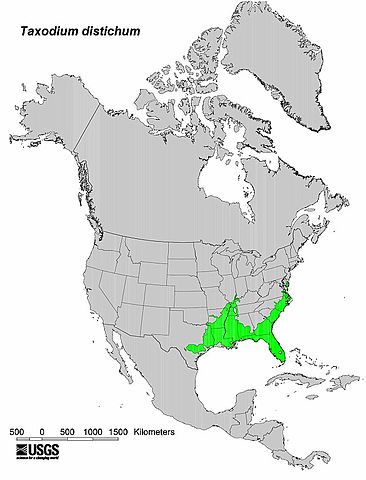
In the south the cypress is commonly found in bayous draped in Spanish moss.
Cypress Knees
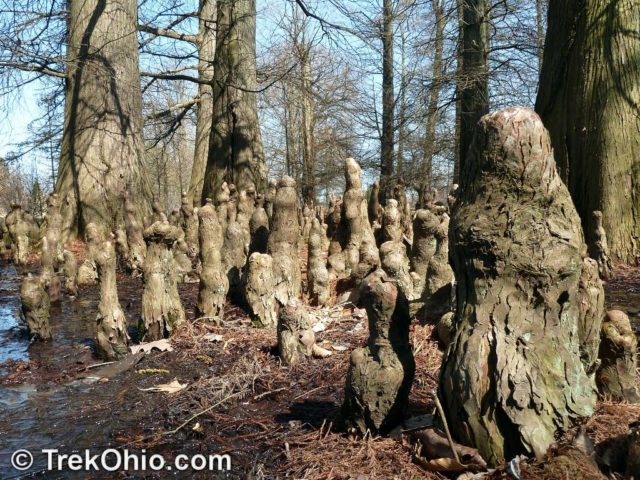
When growing in wet areas, the Bald Cypress tends to develop growths on its roots that extend up into the air. These growths are called “cypress knees”, or more formally, Pneumatophores. There’s some debate as to the purpose of cypress knees. It was originally thought that the cypress knees might facilitate gas exchange, so the roots can respire or “breathe” in water-logged soil. Perhaps without the cypress knees, the roots would die and rot under water. However this belief has been tested scientifically in a couple of different ways, and there’s no evidence to back it up. The more recent theory is that cypress knees provide the tree with extra structural support when the tree is growing in water-logged soil. This extra support may prevent the tree from being blown over even in hurricane conditions in its native range. The roots do not develop knees if the tree is grown away from a body of water.
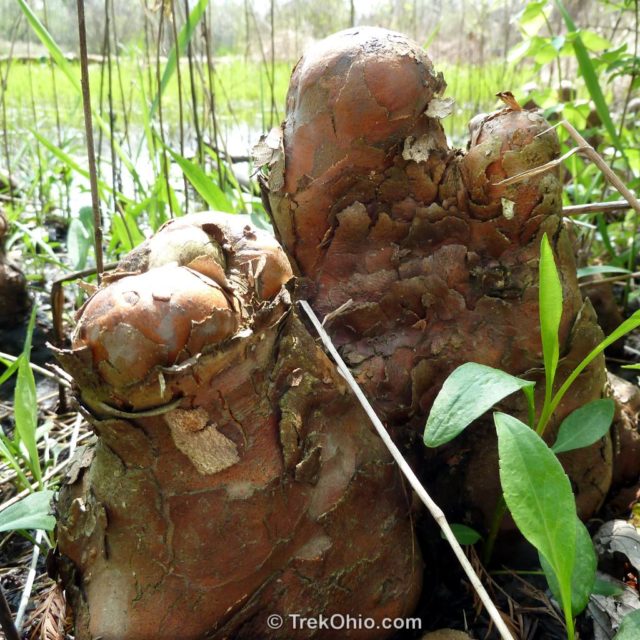
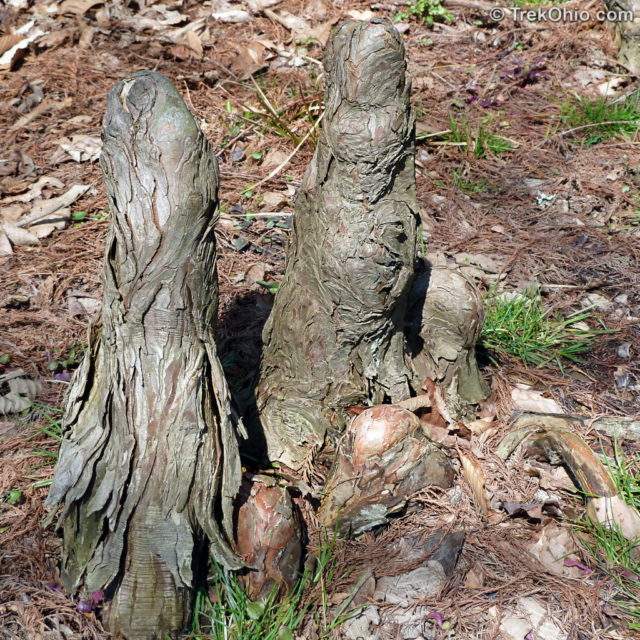
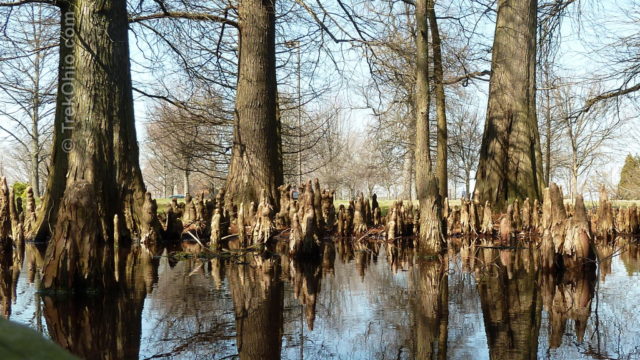
Other common names for Bald Cypress include baldcypress, southern-cypress, white-cypress, tidewater red-cypress, Gulf-cypress, and swamp cypress.
Additional information
- TrekOhio: Dawes Arboretum: Cypress Swamp — I wrote this post after visiting the Cypress Swamp at Dawes Arboretum in Central Ohio. After becoming more aware of this tree, I’ve seen it in many other parks in Ohio.
- ODNR: Baldcypress (Taxodium distichum)
- Oakland Nurseries in central Ohio: Baldcypress (Taxodium distichum)
- Wikipedia: Taxodium distichum
- Wikipedia: Cypress knee
- United States Dept. of Agriculture (USDA): Taxodium distichum (L.) Rich. bald cypress
- USDA Plant Guide: BALD CYPRESS – Taxodium distichum (PDF)
- Ohio State University (OSU) Plant Facts: Taxodium distichum (PDF)
More on Trees
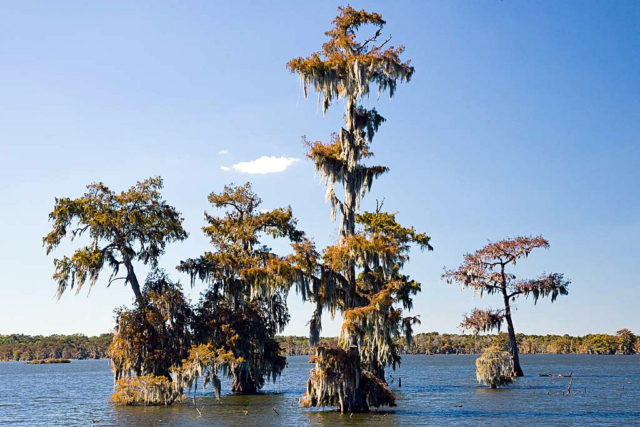
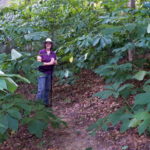
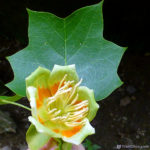
This is my favourite conifer, it just goes an amazing colour in autumn. Thanks for highlighting it and sharing your gorgeous photos too, great post! 😀 x
A forest of ‘little trolls’! I had never heard of cypress knees! Really interesting! No wonder people believed there were trolls in the woods. Can you imagine getting lost and spending the night there? Haha…not me.
I’m going to send Felix over here because he has a photo of a tree in his park that has several nodules coming up from the ground around the base of a tree. The tree is right next to the pond. One of the nodules looks like an animal pointing it’s nose up in the air.
Pam, I thought the cypress knees looked like trolls or gnomes, too! The article about cypress knees at Wikipedia said there are five species of trees that develop knees. Maybe one of these species is the one that Felix photographed.
Indeed, there are several trees like that around the lake. Not identical, but similar enough that they must be (nearly) the same species. Thanks!
Very Interesting. Around here the green s that lose their needles are the Tamaracks or Larches-incredible golden colours in the fall.
Nice portrait of an interesting tree. I don’t think I’ve ever seen a bald cypress – I have been as far south as North Carolina, but didn’t get to the coast. It shows nice fall colours!
I like the Alley Park photo very much.
Thanks, Jill. 🙂 I had thought of using that photo as the cover photo for the post. Maybe I should have after all!
Really interesting tree 🙂
I only became aware of it about it about a year and a half ago, but the more I learned about it, the more I liked it. 🙂
Yes, I recall seeing those ‘Bald Cypress knee’ pictures of yours before.
I absolutely love bald cypresses. In fact, I probably have something like 10 of them in my yard, from some that are 30 years old (one of which has a diameter of maybe 5 feet?) to pretty small ones. They seem to turn color from the bottom up, so my biggest one is still green near the top. Another neat thing is the way their trunks are not round at the bottom. Oh, and I also have a creek in my yard, so I have some pretty good knees sticking up there.
Bob, your yard sounds fantastic! When I was researching this post, I read that a mature bald cypress can grow to have a trunk between 3 and 6 feet in diameter. I didn’t include that information since our trees are shorter than ones in the south, I thought that perhaps the trunk’s girth might be smaller here, too. But since you have one that’s 5 feet in diameter, it sounds like our trunks get just as large.
I didn’t really notice these trees until I checked out the Cypress Swamp at Dawes Arboretum. That really made an impression on me, and then I became aware of it at a number of other parks I visited. We stopped by Alley Park and Rising Park last weekend, and the bald cypress was looking very pretty in its fall colors.
My bad. It’s a circumference of 5 feet, not diameter. But it is still pretty big.
I agree that’s big!
You can see some of the ones in my yard here: Cypress. But that is not my really big one. (I have 5 trees that are the same age, but just the one got really big. It’s in a slightly different location, where I think the soil is looser—disturbed when our house was built. So I think that’s made it easier to grow.)